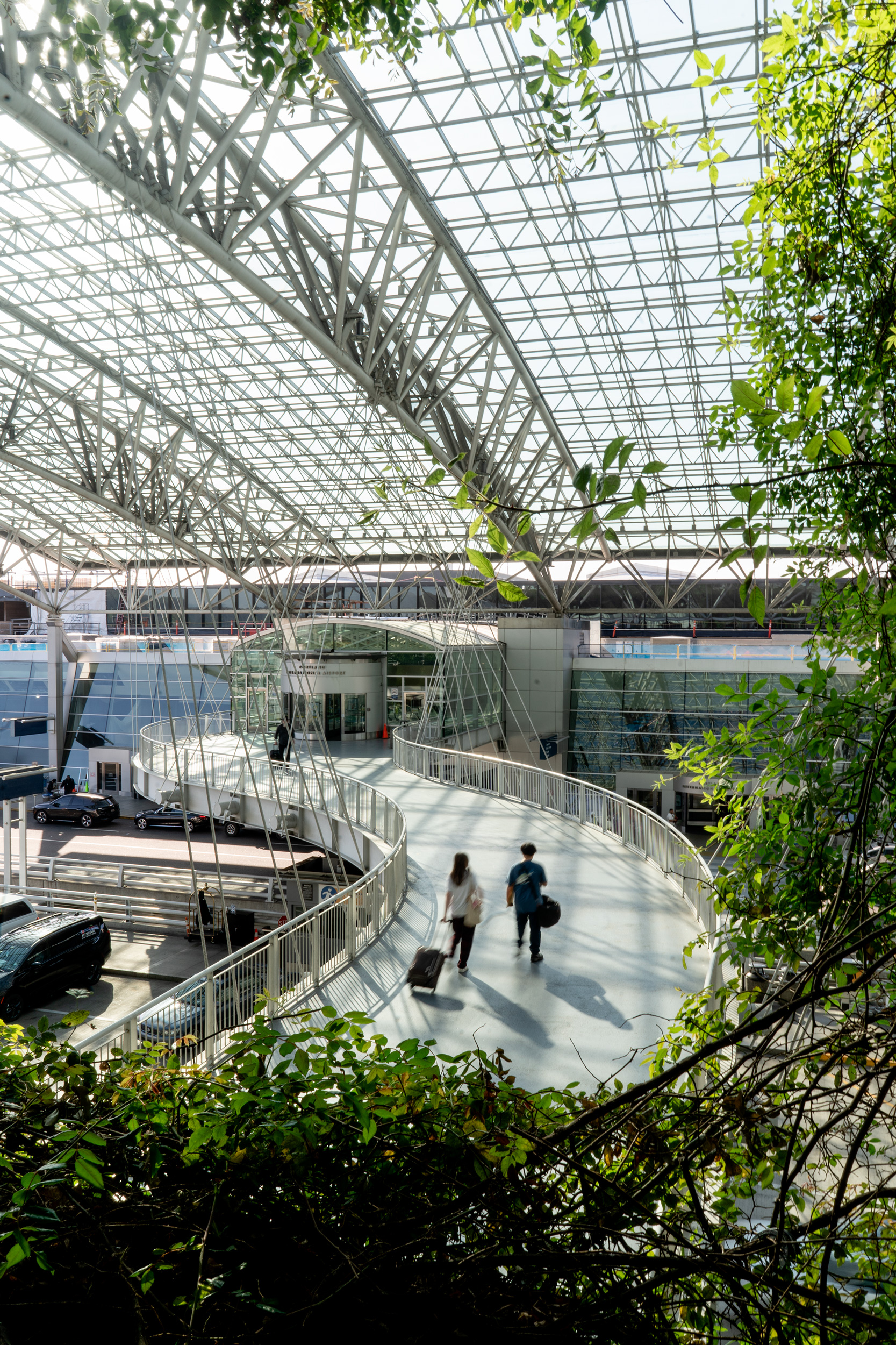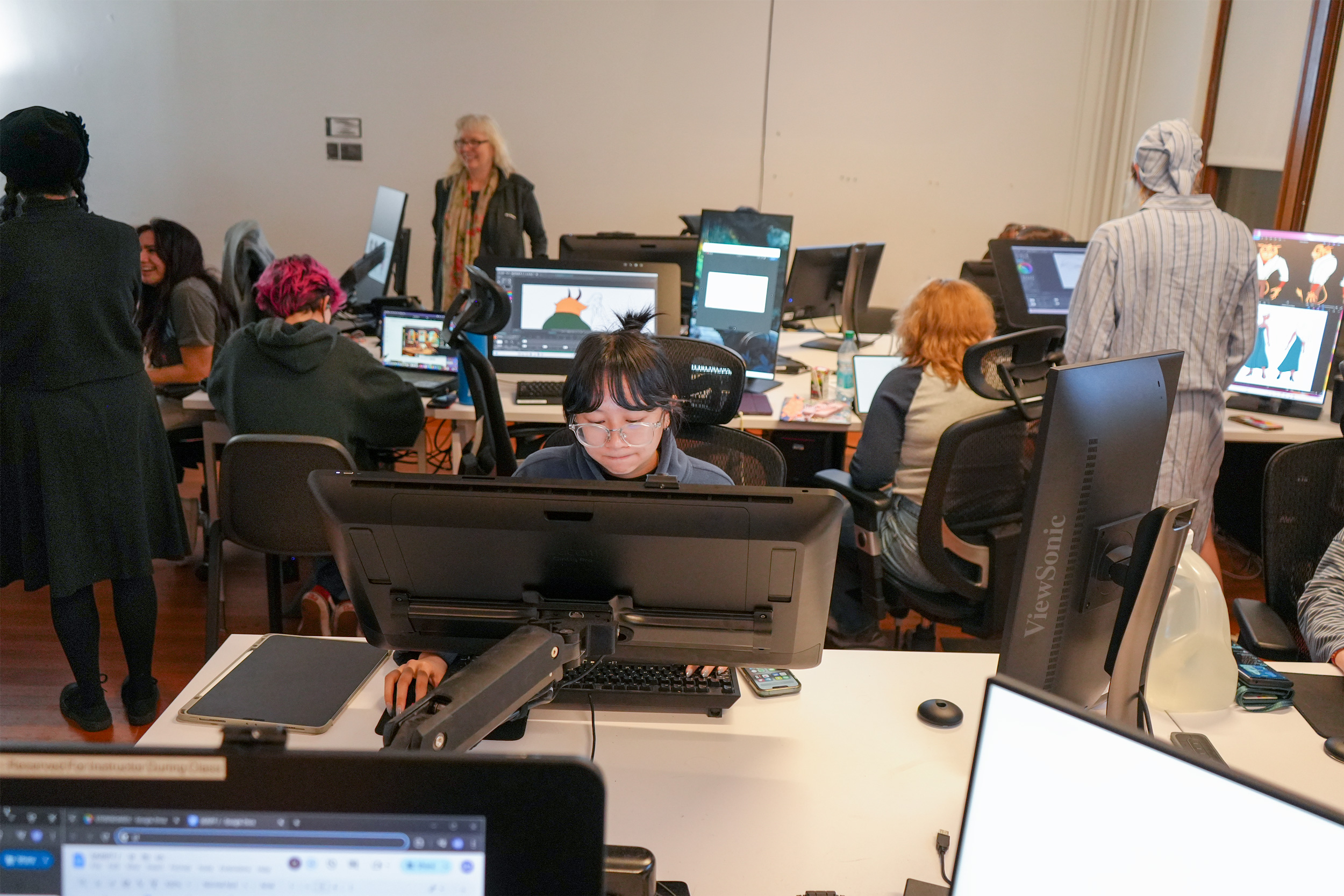With its soaring timber rooflines, emphasis on natural light, and curated local vendors, the newly redesigned main terminal at Portland International Airport (PDX) is more than just a gateway—it tells a story of innovation, sustainability, and community. And many of the storytellers behind it share a common chapter: Willamette University.
At the forefront of the ambitious $2 billion transformation—the first phase was unveiled in August, with final renovations due in 2026—are Bob Packard BA’73, managing partner and architect at ZGF; and Dave Drinkward JD’07, president and CEO of Hoffman Construction.
“It was a privilege to be a part of creating this new front door for the region,” says Drinkward. Now, travelers enter Oregon beneath an undulating canopy crafted from nearly 2 million feet of mass timber, sourced almost entirely from within the state—including a portion from the 305-acre Willamette University at Zena.
Drinkward, who leads one of the largest construction companies in the Pacific Northwest, credits Willamette with teaching him to see the big picture and to navigate the many stakeholder interests in a project of this scale. The original charge for the terminal redesign was relatively straightforward: increase passenger capacity and make the structure resilient to a major earthquake. But as collaborators began to dig in, the project evolved into something even more ambitious.

“The mandate organically grew once we started asking, ‘How do we create a space for travelers that reflects the values of the Pacific Northwest?’”
“The mandate organically grew once we started asking, ‘How do we create a space for travelers that reflects the values of the Pacific Northwest?’” says Packard, whose firm is known for sustainable design. He emphasized the role cross-disciplinary thinking played in getting to the answers. “Willamette gave me that curiosity,” he says. “It was an environment where I could be exposed to everything and ask questions.”
Packard’s team sought to solve the technical challenges by creating a space that was sustainable, intuitive, and grounded in its surroundings. Local timber helped satisfy those ambitions. The infrastructure incorporates beams with flexible joints and specialized hardware designed to move with seismic waves. This “rocking wall system,” as Packard calls it, can absorb and dissipate energy. “Mass timber is not just beautiful,” he says. “It also sequesters carbon.”
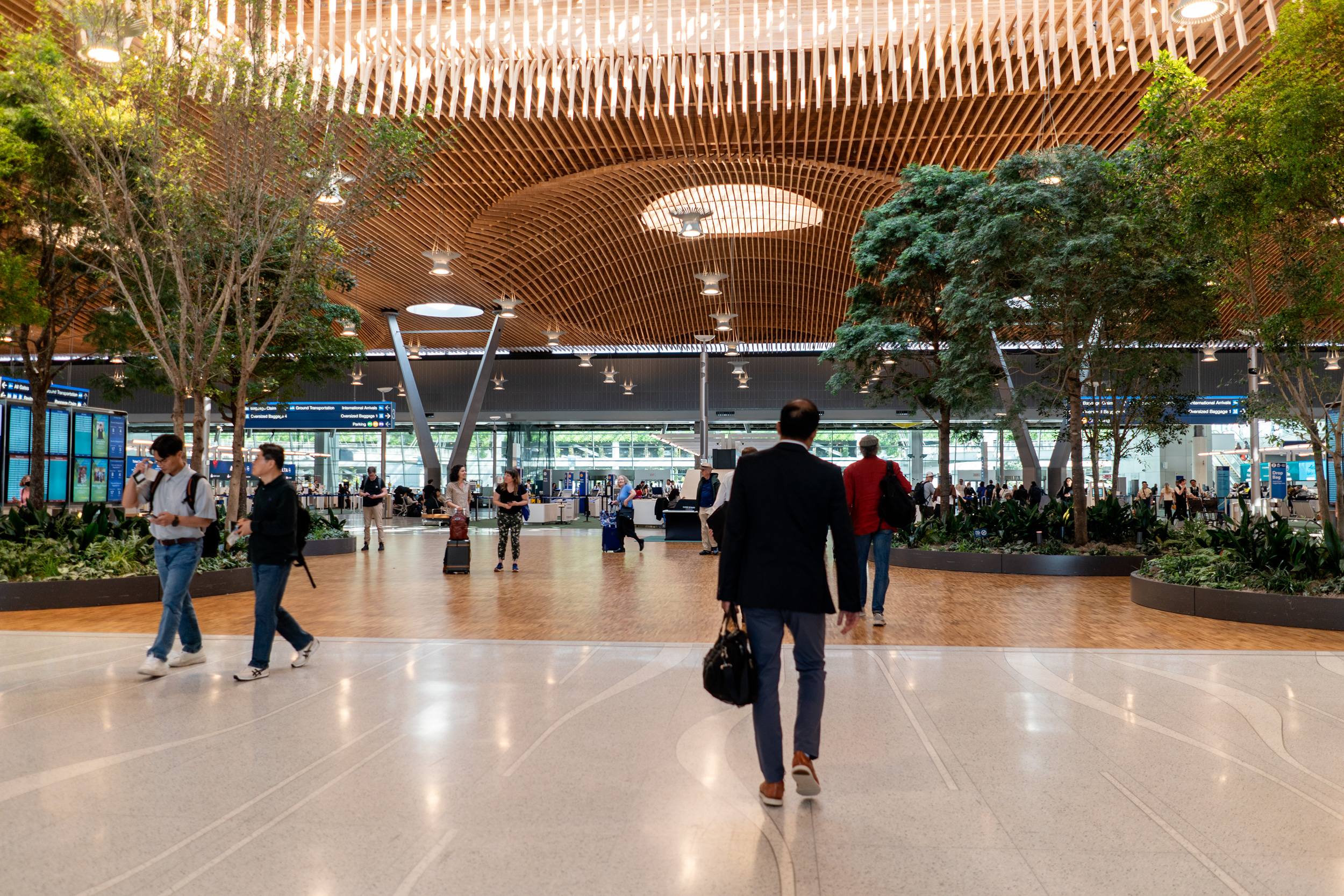
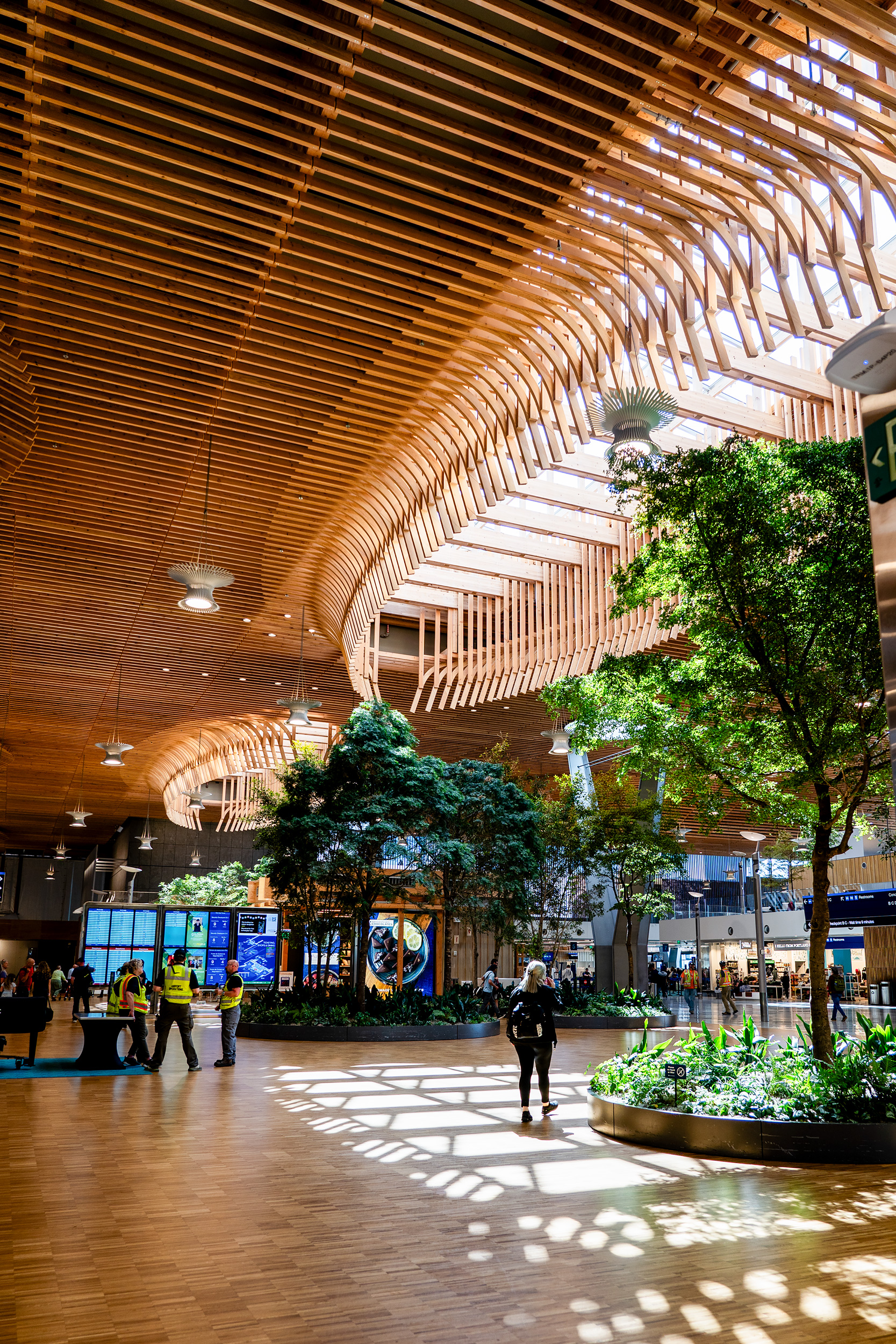
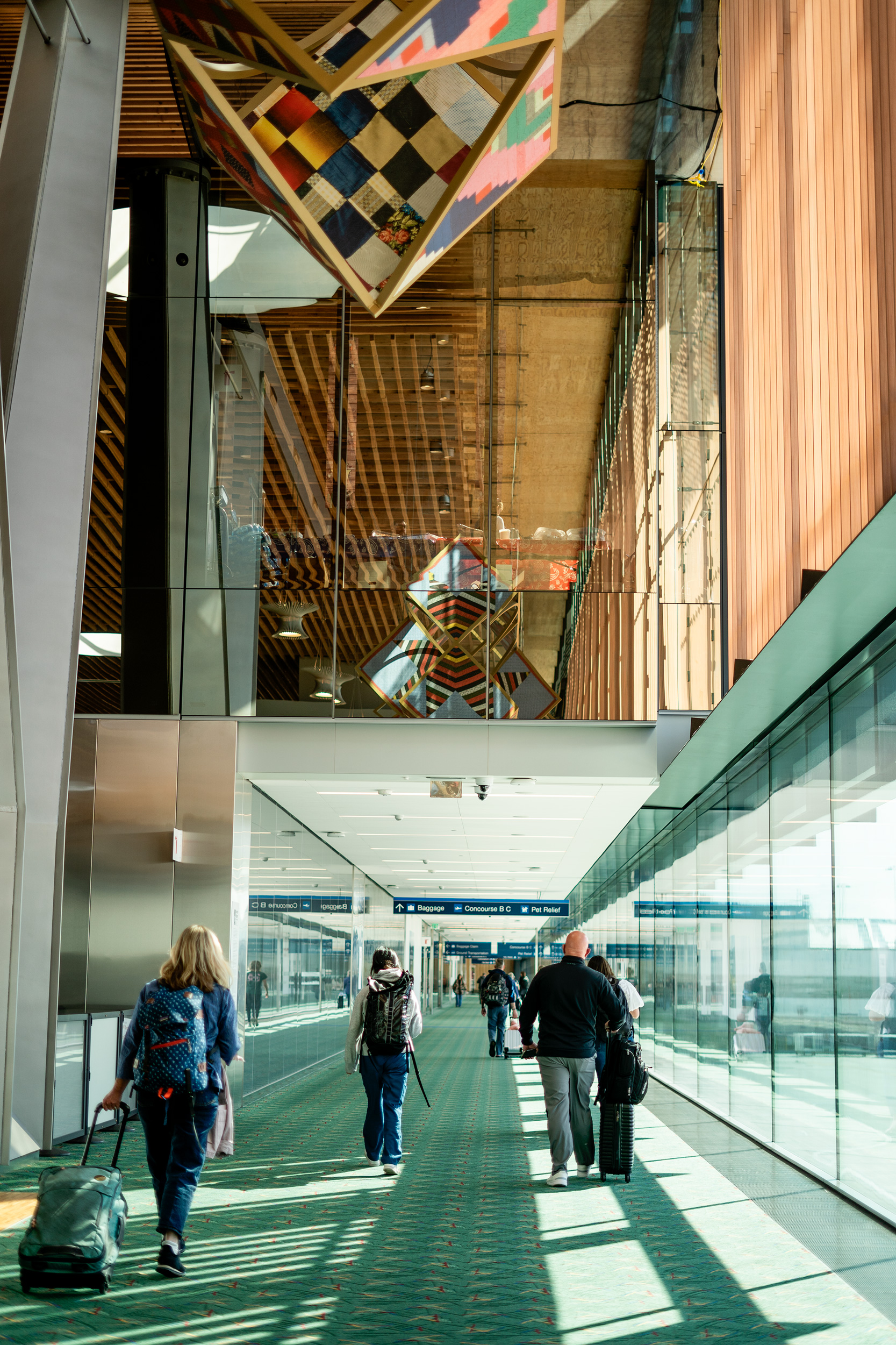
Strategically placed skylights—forty-nine of them—let in tons of natural light, dramatically reducing energy consumption. And the terminal’s biophilic design includes hundreds of native plants and trees specifically chosen for their ability to filter the air and calm the human nervous system.
The terminal is economically transformative, too. “We awarded over $250 million in contracts to small businesses, and about $100 million of that went to local, minority-owned firms,” says Dave Robertson BA’89, chief public affairs officer for the Port of Portland. PDX is now a showcase for homegrown Oregon businesses such as Powell’s Books, Blue Star Donuts, and Pendleton Woolen Mills.
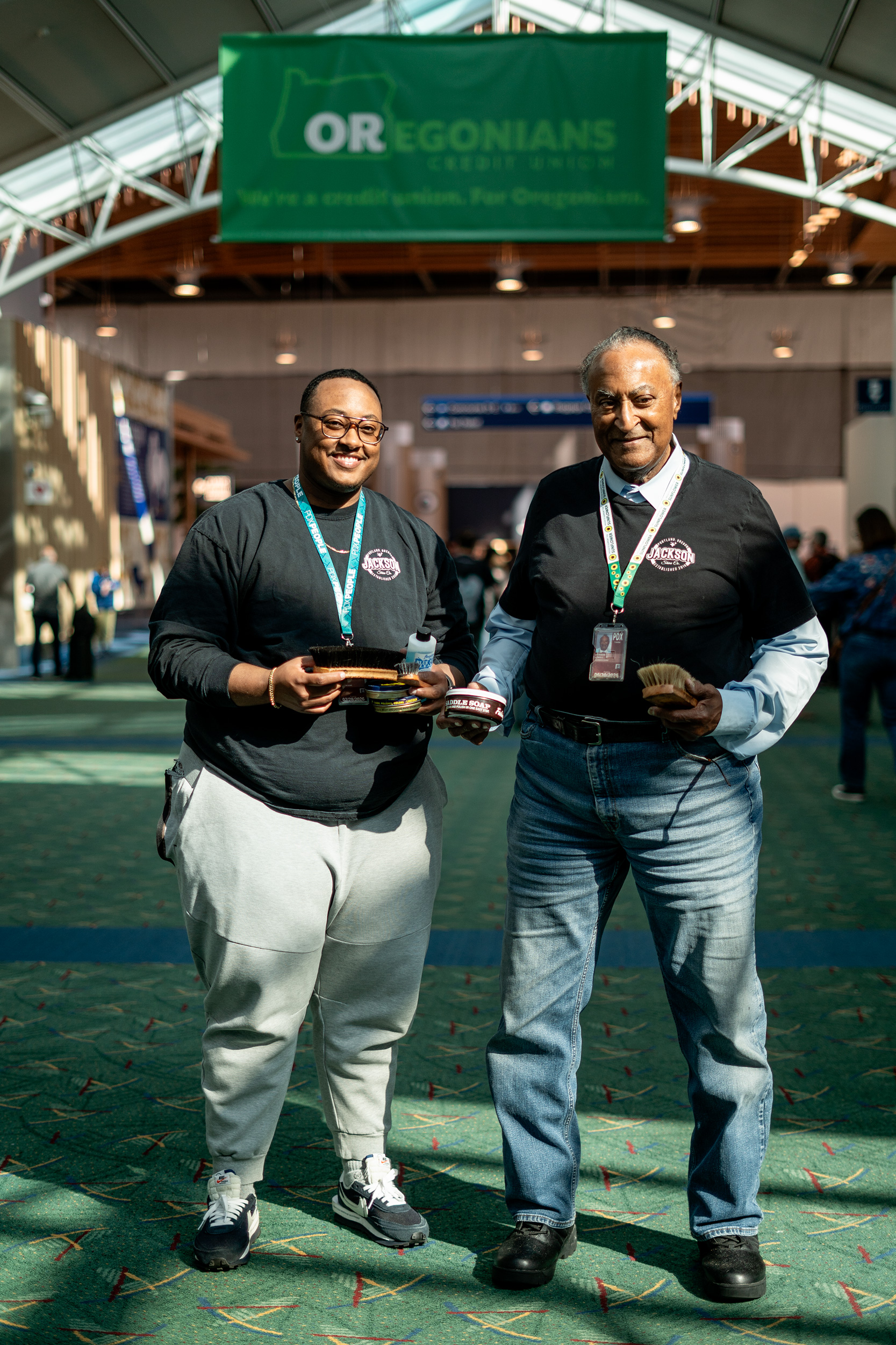
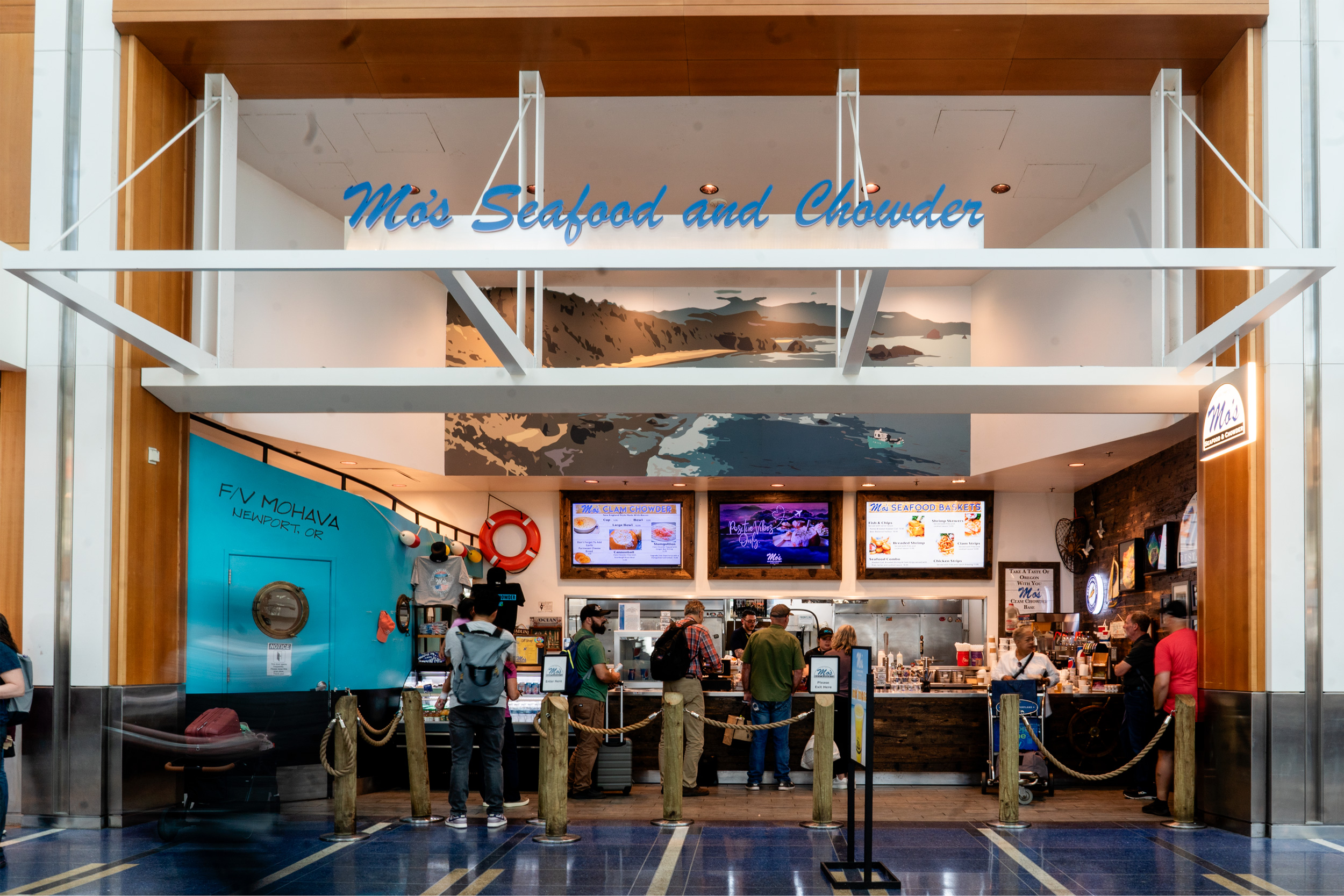

Willamette roots run deep here, too. Four generations of Pendleton’s founding family have served on the university’s board of trustees. Other family-run operations in the terminal are affiliated with Willamette MBA alumni: Honor Jackson MBA’21 is one third of the father-and-sons team behind Jackson Shine Co., and Carter McEntee MBA’22 manages the beloved coastal staple Mo’s Seafood and Chowder, which has an outpost in the new PDX.

The project also catalyzed innovation in Oregon’s timber industry. Zena Forest Products, a small hardwood company based near Willamette’s campus, received support from the Port to purchase new equipment for manufacturing the modular wood tiles used in the terminal’s floors. Zip-O-Log Mills in Eugene produced the massive glulam beams for the ceiling—some up to eighty feet long. “At first they said it was too complicated,” Robertson recalls. “But then they came back and said ‘We can do it.’ They cut a hole in the side of their shop to fit the beams.”
The renovation has already improved passenger flow, with upgraded TSA checkpoints, intuitive signage, and new accessibility technologies. But more than that, it’s bolstered a spirit of ingenuity and collaboration to the region.
“This project shows we can do big, bold things here,” Robertson says. “It proves the Northwest is full of ambition, talent, and innovation. And that when we lead with values, we create places that reflect who we are.”
••
Charlotte Herrold is a writer, editor, and digital content strategist from Toronto, Canada. She has an M.Sc. in creative writing from the University of Edinburgh.
